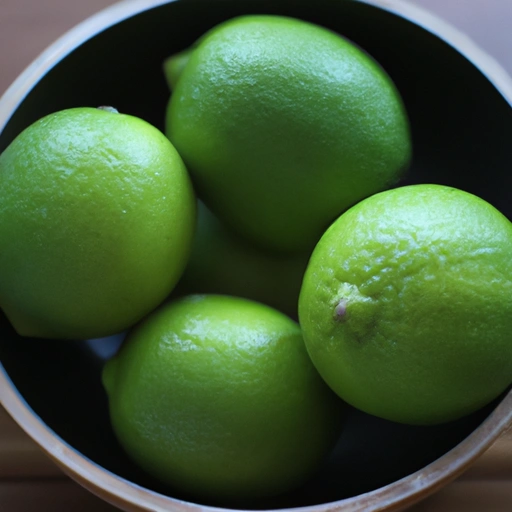Lime
Description

Lime is a vibrant citrus fruit known for its intense tartness and bright, zesty flavor. This small green fruit, with its high acidity and fragrant aroma, is a staple in many culinary traditions around the globe. Limes are often used to add a punch of flavor to dishes and drinks, ranging from savory to sweet. As a versatile ingredient, lime juice and zest can transform recipes, providing balance and complexity to flavors.
Common uses
Limes are commonly used to add a splash of acidity and a hint of citrus flavor to a variety of dishes. They are a key ingredient in marinades, dressings, beverages, and desserts. Lime juice is a crucial component of cocktails such as margaritas and mojitos, as well as non-alcoholic drinks like limeade. The zest, or grated outer peel, is used to infuse dishes with a concentrated burst of lime aroma.
Nutritional value
Calories
Average lime (67g or 2.36oz): Approximately 20 calories.
Protein
Average lime: Contains about 0.5 grams of protein.
Fat
Average lime: Contains negligible amounts of fat.
Carbohydrates
Average lime: Contains around 7 grams of carbohydrates.
Vitamins
Limes are an excellent source of vitamin C. One lime can provide about 22% of the daily recommended intake (RDI) using American units (19.5mg of vitamin C), which is roughly equivalent to 22% RDI in European units (20mg of vitamin C).
Minerals
Limes also contain small amounts of minerals such as calcium, potassium, and magnesium.
Health benefits
The high vitamin C content in limes can boost the immune system and act as an antioxidant. Regular consumption may aid in skin health, wound healing, and may reduce the risk of chronic diseases. The citric acid can also aid in absorption of iron from plant-based foods.
Potential risks
While limes offer numerous health benefits, overconsumption of lime juice can lead to dental erosion due to its acidity. Those with citrus allergies or stomach ulcers should also consume limes with caution.
Common recipes
Limes are featured in a variety of recipes including key lime pie, ceviche, guacamole, and Thai curry. They are also used in numerous sauces and condiments like salsa verde and chutney.
Cooking methods
Lime juice and zest are often added at the end of the cooking process to preserve their fresh flavor. They are also used in raw applications and in marinades to tenderize meats.
Pairing with other ingredients
Limes pair well with seafood, poultry, coconut, tropical fruits, and herbs such as cilantro and mint. In terms of spices, lime complements cumin, coriander, and chili pepper.
Summary
Lime is a citrus fruit cherished for its tangy flavor and versatility in the kitchen. With beneficial nutrients and a history steeped in global trade and maritime exploration, lime holds a special place in culinary traditions around the world. Whether used in beverages, desserts, or savory dishes, lime adds a refreshing zest that enhances the overall sensory experience of a meal.